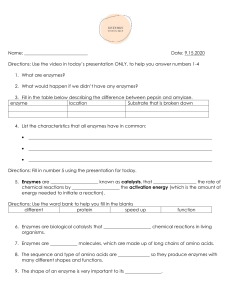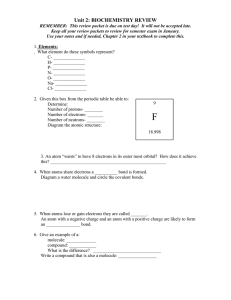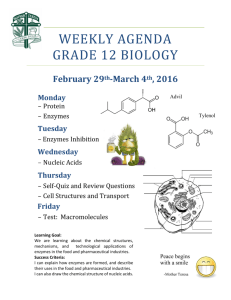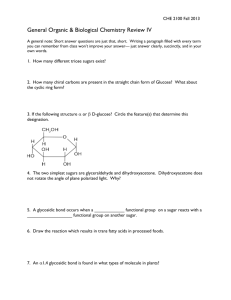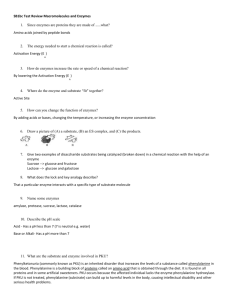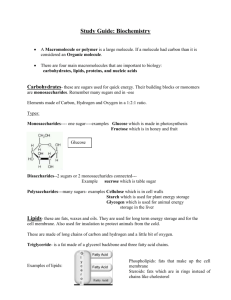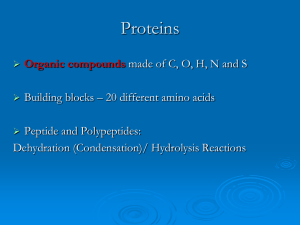Help with AP Biology Free Response (Essay) Questions
advertisement
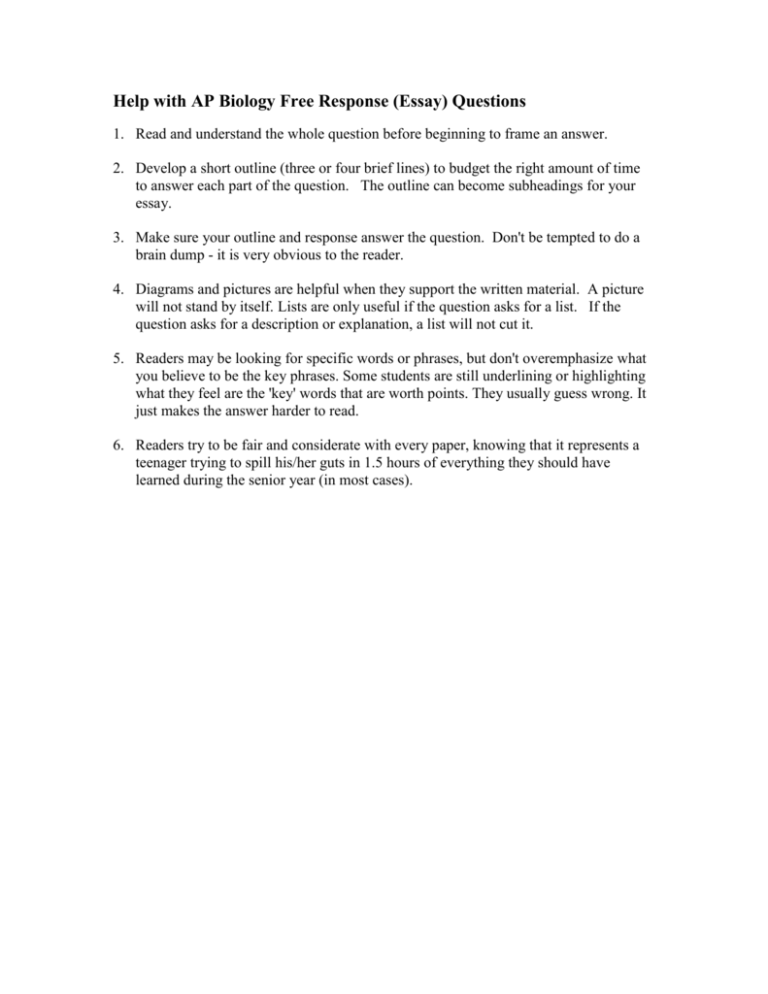
Help with AP Biology Free Response (Essay) Questions 1. Read and understand the whole question before beginning to frame an answer. 2. Develop a short outline (three or four brief lines) to budget the right amount of time to answer each part of the question. The outline can become subheadings for your essay. 3. Make sure your outline and response answer the question. Don't be tempted to do a brain dump - it is very obvious to the reader. 4. Diagrams and pictures are helpful when they support the written material. A picture will not stand by itself. Lists are only useful if the question asks for a list. If the question asks for a description or explanation, a list will not cut it. 5. Readers may be looking for specific words or phrases, but don't overemphasize what you believe to be the key phrases. Some students are still underlining or highlighting what they feel are the 'key' words that are worth points. They usually guess wrong. It just makes the answer harder to read. 6. Readers try to be fair and considerate with every paper, knowing that it represents a teenager trying to spill his/her guts in 1.5 hours of everything they should have learned during the senior year (in most cases). Help with the Water Chemistry and Enzyme Questions 1) Enzymes - Discuss each of the following: a) The structure of an enzyme b) How enzymes function c) How enzymes are regulated Consider the following outline: Enzymes are protiens, which are polymers of amino acids. Amino acids are structured as a carbon atom bonded to a ___________, a _____________, a ____________, and a fourth bond to a group of atoms that varies with each of the 20 amino acids. Interactions between amino acids affect _____________ and _________________. The function of an enzyme is to _______________ a chemical reaction. Use terms: catalyst (or catalyze), activation energy, induced fit, specific substrate, active site, cofactor Enzymes can be regulated in several ways. 2) Describe why water is an ideal medium for living things.

